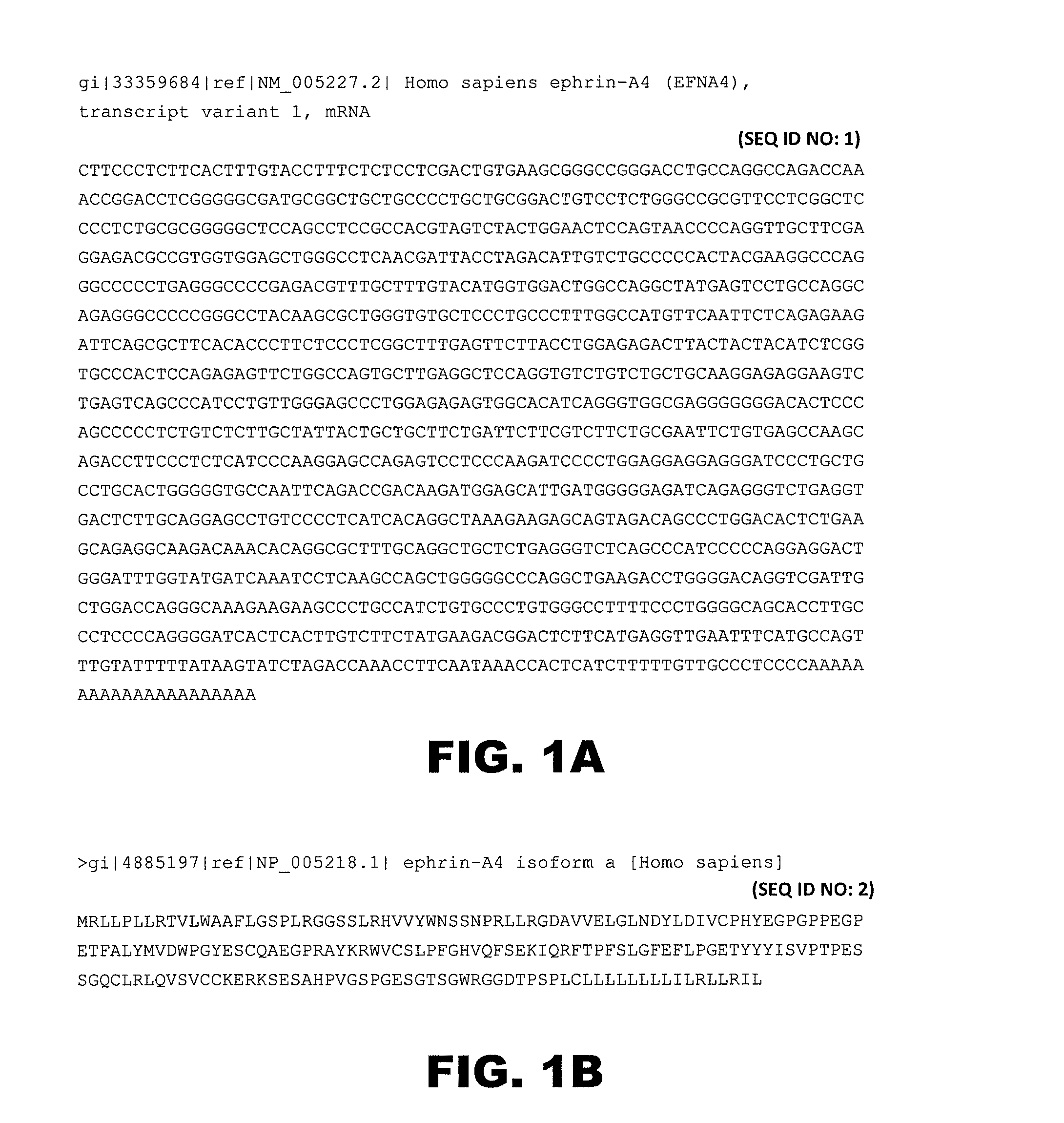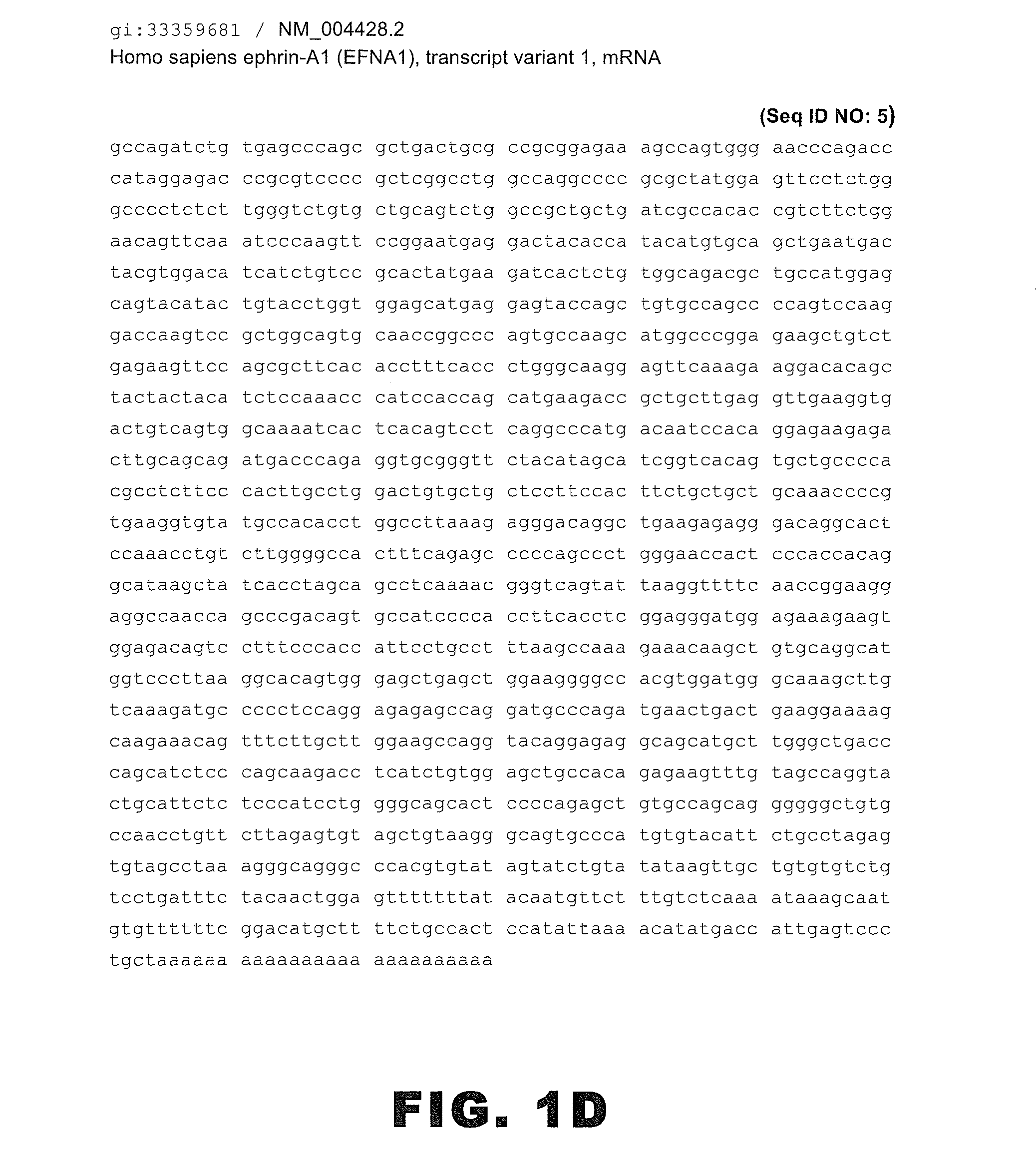Novel modulators and methods of use
a technology of modulators and modulators, applied in the field of new modulators and methods of use, can solve the problems of affecting cell proliferation and/or differentiation, few options for patients, and treatment, such as surgery, may not be viable alternatives,
- Summary
- Abstract
- Description
- Claims
- Application Information
AI Technical Summary
Benefits of technology
Problems solved by technology
Method used
Image
Examples
example 1
Enrichment of Tumor Initiating Cell Populations
[0306]To characterize the cellular heterogeneity of solid tumors as they exist in cancer patients, elucidate the identity of tumor perpetuating cells (TPC; i.e. cancer stem cells: CSC) using particular phenotypic markers and identify clinically relevant therapeutic targets, a large non-traditional xenograft (NTX) tumor bank was developed and maintained using art recognized techniques. The NTX tumor bank, comprising a large number of discrete tumor cell lines, was propagated in immunocompromised mice through multiple passages of heterogeneous tumor cells originally obtained from numerous cancer patients afflicted by a variety of solid tumor malignancies. The continued availability of a large number of discrete early passage NTX tumor cell lines having well defined lineages greatly facilitate the identification and isolation of TPC as they allow for the reproducible and repeated characterization of cells purified from the cell lines. More...
example 2
Isolation and Analysis of RNA Samples From Enriched Tumor Initiating Cell Populations
[0316]Several established colorectal NTX cell lines (SCRX-CR4, CR11, CR33, PA3, PA6 & PA14) generated and passaged as described in Example 1 were used to initiate tumors in immune compromised mice. For mice bearing SCRX-CR4, PA3 or PA6 tumors, once the mean tumor burden reached ˜300 mm3 the mice were randomized and treated with 15 mg / kg irinotecan, 25 mg / kg Gemcitabine, or vehicle control (PBS) twice weekly for a period of at least twenty days prior to euthanization. Tumors arising from all six NTX lines, including those from mice undergoing chemotherapeutic treatment were removed and TPC, TProg and NTG cells, respectively, were isolated from freshly resected colorectal NTX tumors and, similarly, TG and NTG cells were isolated from pancreatic NTX tumors, generally using the technique set out in Example 1. More particularly, cell populations were isolated by FACS and immediately pelleted and lysed in...
example 3
Real-Time PCR Analysis of Ephrin-A Ligands in Enriched Tumor Initiating Cell Populations
[0322]To validate the differential ephrin-A ligand expression observed by whole transcriptome sequencing in TPC populations versus TProg and NTG cells in colorectal cancer, and TG versus NTG cells in pancreatic cancer, TaqMan® quantitative real-time PCR was used to measure gene expression levels in respective cell populations isolated from various NTX lines as set forth above. It will be appreciated that such real-time PCR analysis allows for a more direct and rapid measurement of gene expression levels for discrete targets using primers and probe sets specific to a particular gene of interest. TaqMan® real-time quantitative PCR was performed on an Applied Biosystems 7900HT Machine (Life Technologies), which was used to measure EFNA4 gene expression in multiple patient-derived NTX line cell populations and corresponding controls. Moreover, the analysis was conducted as specified in the instructio...
PUM
| Property | Measurement | Unit |
|---|---|---|
| dissociation constant | aaaaa | aaaaa |
| dissociation constant | aaaaa | aaaaa |
| Tm | aaaaa | aaaaa |
Abstract
Description
Claims
Application Information
 Login to View More
Login to View More - R&D
- Intellectual Property
- Life Sciences
- Materials
- Tech Scout
- Unparalleled Data Quality
- Higher Quality Content
- 60% Fewer Hallucinations
Browse by: Latest US Patents, China's latest patents, Technical Efficacy Thesaurus, Application Domain, Technology Topic, Popular Technical Reports.
© 2025 PatSnap. All rights reserved.Legal|Privacy policy|Modern Slavery Act Transparency Statement|Sitemap|About US| Contact US: help@patsnap.com



